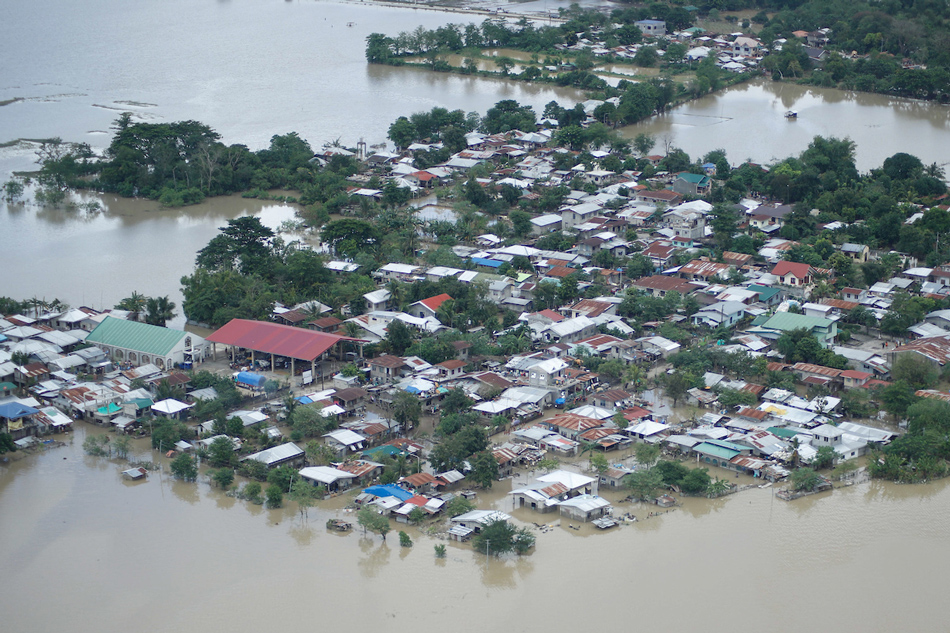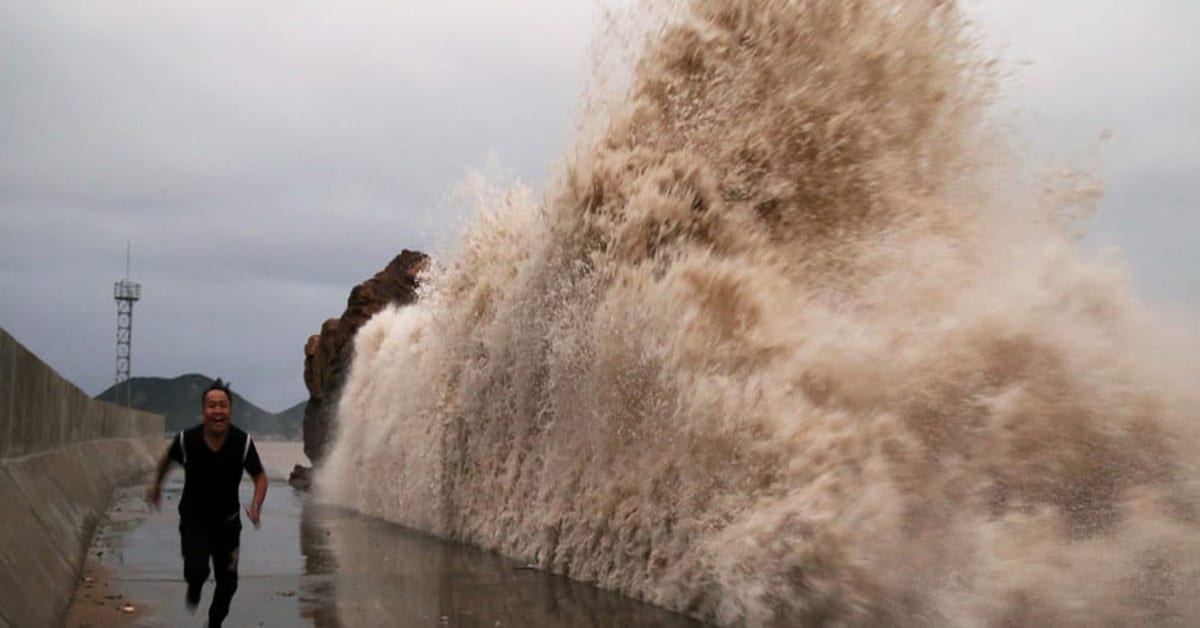
Asia Pacific, The Most Hit by Climate Change
Climate change is the most serious and life-threatening challenge of the world in the 21st century. No matter what others might say, this is a crisis that everyone must care about. You will be affected by climate change, one way or the other. Just because you don’t feel it now, it doesn’t mean that it won’t change your life sooner or later. The changing climate covers everything from melting icebergs to devastating weather systems of unforeseen levels.
Youth all around the world have all rallied in the name of the climate. Climate strikes, inspired by Swedish Greta Thunberg and other like-minded teens, spurred the passion of desperate young people who worry that they won’t have a future worth living in a world that’s been abused to death by institutions who care more for economic gains. Among the youth who protested against inaction towards climate change are indigenous and poor residents of the most devastated region by climate change – the Asia Pacific. They barely contribute to carbon emissions and don’t deserve the destruction of their lands but unlucky, suffer the brunt.
Asia Pacific is the most disaster-prone region in the world

Asia-Pacific is the most disaster-prone region in the world. It boasts miles of coastlines amid low-lying islands and communities. This region’s place in the world is a double-edged sword. Behind the bountiful beauty lies the danger of rising sea levels and weather extremes. Asians and Pacific Islanders suffer from heat waves, floods, storms, and droughts. Worse, this affects everything in their communities from nutrition and health, to safety and income concerns.
Most countries in the Asia-Pacific region are developing economies and Third-World nations. The yearly deluges of inevitable disasters that come their way make it more difficult to improve living standards. Ironically, the poorer Asia-Pacific nations who respect nature in their way of life are the ones who suffer the effects of climate change the most. Unpredictable weather patterns can lead to crop failure, spiking food prices, and spreading diseases that threaten to uproot decades of development gains.
Sinking places
A two-meter sea level rise could displace over 180 million people. This is alarmingly possible due to warming temperatures that melt glaciers and ice sheets and expand water bodies. This threatens many Asia-Pacific nations. In fact, Pacific Islanders are already the first to suffer from sinking. Kiribati, in particular, has been forced to buy land for its residents in preparation for the eventual sinking of the island nation in 30 years.
Some of the possible solutions to help cope with rising sea levels are restoring mangroves, protecting coral reefs, and mapping areas at risk from flooding. However, this requires global solidarity in protecting the oceans and reducing carbon emissions.
Terrible storms
In the last decade, storms have gone insane in the Asia-Pacific. There have been multiple numbers of storms per week where before, there was only one or two per month. Typhoons have gone stronger with wider reaches that meteorologists are scratching their heads at the sheer devastation an innocent Low-Pressure Area could grow into. Lately, storms have even been recorded to return to the country they have devastated within days.

All these extreme storm patterns affect the Asia-Pacific nations who are mostly archipelagos and island nations surrounded by the Pacific Ocean. Half of Asia’s population, about 2.4 billion people, lives on the coastlines of the battlefield. Every day they are threatened with the risk of floods and storms. Approximately 40,000 Asians and Pacific Islanders die as casualties of storms, floods, and landslides annually.
Countless storms also threaten terrestrial resources due to increased salination of the land. These extreme weather patterns are disastrous to the countries in numerous effects. They displace people, destroy infrastructure, contaminate freshwater, crush ecosystems, and wipe out agricultural land. Experts estimate the cost of natural disasters in the Asia Pacific at around US$ 675 billion every year. Those billions could have been allotted for the improvements in the wellbeing of the people but spent on damages caused by climate change.
Intensified Heatwaves and Droughts

2019 is on track to become the hottest year on record. It is even worse for Asia-Pacific nations which rest in the tropics. The tropical climate yields to bountiful resources since time immemorial. But now, it burns to a dangerous degree, the heat affects both people and society.
Higher temperature increases the chance of each individual to experience heat strokes, heart attacks, and other related health issues. Second, it endangers water-dependent animals which may result in the extinction of some species. Thirdly, extreme heat provokes fires both in the residential areas and in the forests. Too much heat from the sun leads to heatwaves and droughts. Combine it with the capitalistic clearing of forest lands for agriculture or residences would lead to a fatal constituent for food insecurity. Rivers dry up with little chance of revival. Every being in the ecosystem suffers – from humans to animals and to plants that thirst for water.
Damaged Oceans
In Asia-Pacific, about 200 million people live in the fishing and marine industry.

Healthy oceans are at the heart of this region’s lives. They provide food, jobs, and cultural connection to nature. In fact, Asia-Pacific people are the most environmentally-conscious individuals. Noticeably, indigenous people treat the Pacific Ocean as a part of their lives that is ingrained in their way of life since their ancestors’ time.
Climate change is directly linked to coral bleaching, putting biodiversity and marine ecosystems at risk when there is a sudden change in water temperature and water level increases. As a result, food chains are altered and fish stocks collapse, putting millions of lives and financial sources at risk. This even worsens when you put on marine pollution into the equation. The Great Pacific Patch damages the stability of the Pacific Ocean and all dependent species that live in it.
Currently, Asians and Pacific Islanders work on conserving and restoring coral reefs. However, it’s not sufficient enough to protect the world’s oceans and the people that depend on it for a living.
Conclusion
Climate change is the greatest challenge of our time, a crisis that exempts no one to suffer from. Tragically, Asia-Pacific gets the lion’s share of the consequences despite contributing barely a pittance to global carbon emissions. Every year, millions are in peril from severe natural disasters and they are from countries that are poverty-stricken or still developing to be able to cope well with the devastation.
In Asia-Pacific, millions of lives are at stake. The pressure is on for the West and the rest of the developed nations to step up and pay for the rampant abuse of Mother Nature. They’ve reaped the majority of gains out of the fossil-fuel-driven global economy. All this happened while the Asia-Pacific became the dumping ground and frontline casualties of climate change. They act as if what is happening here is not a precursor of what might happen to them in the future.
As long as all of us do something for the environment, slowly we can change the status quo. We must take steps to live more sustainably. If possible, go zero waste. Getting there will be systematic and for that to happen, we must change. Earth and future generations need us to act for the preservation of the only home we have.





Hello my loved one! I wish to say that this article is amazing, nice written and include approximately all important infos. I?¦d like to look extra posts like this .